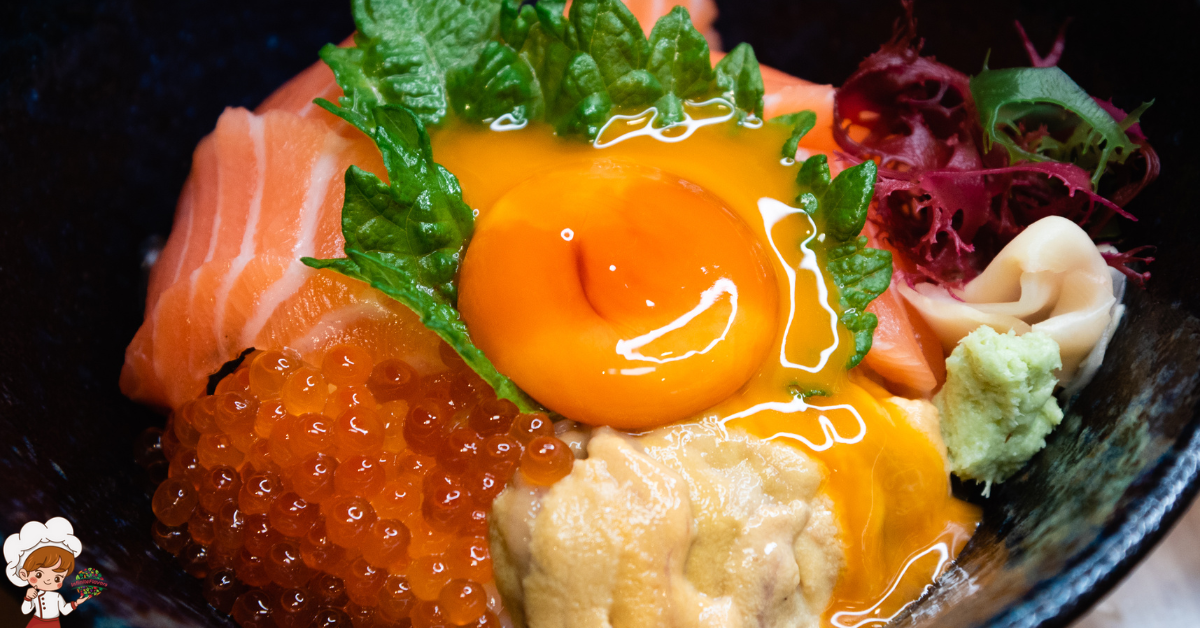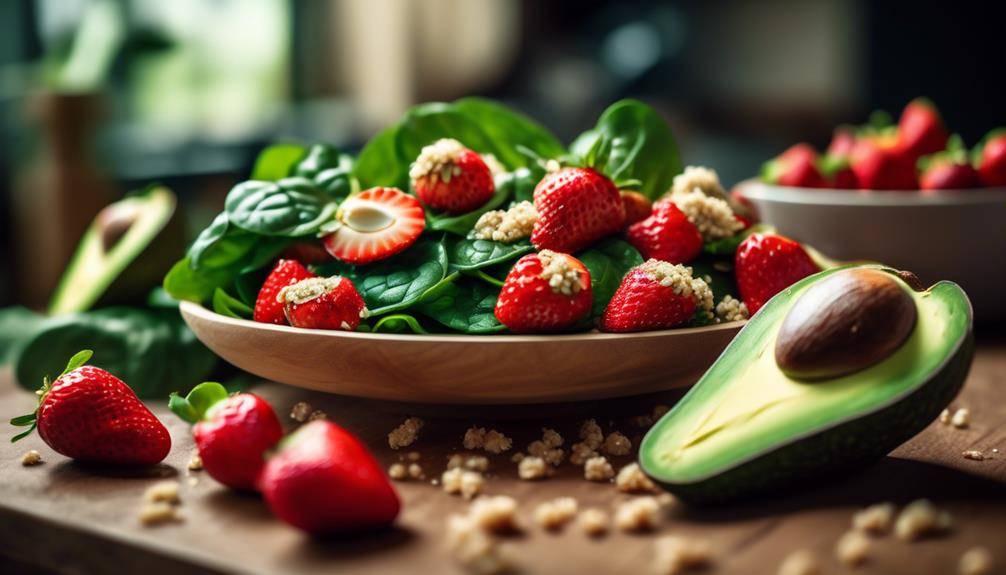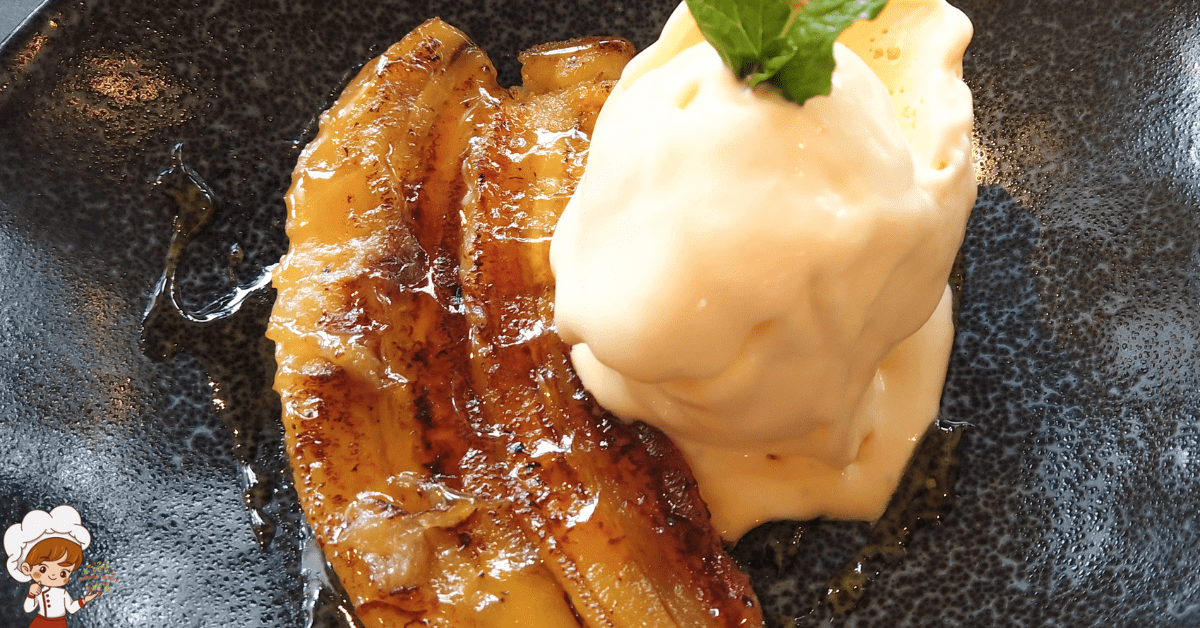Popular Classic Japanese Donburi Rice Bowl Recipes

Craving a hearty and satisfying meal? Look no further than Japanese Donburi Rice Bowl Recipes. Picture succulent slices of beef simmered in a sweet and savory sauce, tender chicken cutlets coated in a crispy golden crust, or plump and juicy seafood nestled atop a bed of steaming rice.
These iconic dishes not only showcase the bold flavors of Japanese cuisine but also offer a comforting experience that will transport your taste buds to the bustling streets of Tokyo. Whether you’re a meat lover, a seafood enthusiast, or a devoted vegetarian, there’s a donburi recipe waiting to tantalize your senses. So, why not embark on a culinary journey through the world of donburi and discover your new favorite rice bowl creation?
Beef Gyudon
If you’re craving a hearty and flavorful rice bowl, look no further than Beef Gyudon. This classic Japanese dish is a delicious combination of thinly sliced beef, onions, and a savory soy-based sauce served over a bed of steamed white rice. The name Gyudon translates to “beef bowl,” and it’s a popular comfort food in Japan.
To make Beef Gyudon, you’ll need a few key cooking techniques. First, you’ll need to thinly slice the beef. It’s best to use a cut like sirloin or ribeye, as they are tender and have great flavor. To achieve thin slices, it’s easier if you partially freeze the meat before slicing it against the grain. This technique helps to ensure the beef cooks quickly and remains tender.
Next, you’ll need to caramelize the onions. This step adds a rich sweetness to the dish. Start by sautéing sliced onions in a little oil until they become soft and translucent. Then, add a mixture of soy sauce, mirin, sugar, and dashi (a Japanese cooking stock) to the pan. Allow the sauce to simmer and thicken while the flavors meld together.
Once the onions and sauce are ready, it’s time to add the thinly sliced beef to the pan. Cook the beef just until it turns brown, as it will continue to cook in the hot sauce. The beef should be tender and juicy when done.
To serve, simply spoon the beef and onions over a bowl of steamed white rice. The beef gyudon is best enjoyed hot, and you can garnish it with thinly sliced green onions or pickled ginger for an extra kick of flavor.
Chicken Katsudon
Now, let’s turn our attention to another delectable rice bowl option: Chicken Katsudon. This classic Japanese dish combines crispy breaded chicken cutlets with a sweet and savory sauce, all served over a bed of steamed rice. Here are four things you need to know about Chicken Katsudon:
- Cooking Techniques: Chicken Katsudon starts with thinly pounded chicken breasts, which are then coated in flour, dipped in beaten eggs, and coated in panko breadcrumbs. The chicken is then deep-fried until golden brown and crispy. The sauce is made by combining dashi broth, soy sauce, mirin, and sugar, and it is simmered until thickened. Finally, the breaded chicken cutlets are added to the sauce and simmered until they absorb the flavors.
- Cultural Significance: Katsudon is a popular comfort food in Japan. It is believed to have originated in the late 19th century and quickly became a favorite among laborers. The dish gained further popularity during World War II when meat was scarce, and katsu became a more affordable protein option. Today, Chicken Katsudon is enjoyed by people of all ages and is often served in casual restaurants and food stalls.
- Flavor Profile: Chicken Katsudon offers a perfect balance of textures and flavors. The crispy chicken cutlets provide a satisfying crunch, while the sauce adds a rich umami taste with a hint of sweetness. The dish is often topped with a beaten egg, which is cooked in the residual heat of the rice and chicken, creating a creamy and velvety texture.
- Variations: While Chicken Katsudon is traditionally made with breaded chicken cutlets, there are variations that use other proteins such as pork or tofu. Some recipes also incorporate vegetables like onions, mushrooms, or green onions to add more depth and freshness to the dish.
With its crispy chicken, flavorful sauce, and comforting rice, Chicken Katsudon is a must-try dish for anyone looking to experience the delicious flavors of Japanese cuisine.
Pork Butadon
Now let’s talk about Pork Butadon, a traditional Japanese rice bowl dish that features succulent slices of pork simmered in a sweet and savory sauce. This classic dish is typically served over a bed of steamed rice, making it a satisfying and comforting meal. While the traditional version is delicious on its own, there are also variations of Butadon that incorporate different ingredients and flavors to suit your preferences.
Traditional Pork Butadon
To prepare a delicious and authentic Traditional Pork Butadon, start by marinating thinly sliced pork in a soy-based sauce for optimal flavor. Here are four tips to make your Pork Butadon a standout dish:
- Select the right cut of pork: Choose fatty cuts like pork belly or shoulder for a richer and more tender texture.
- Marinate the pork: Combine soy sauce, mirin, sake, ginger, garlic, and brown sugar to create a flavorful marinade. Let the pork soak in the marinade for at least 30 minutes or overnight for a more intense flavor.
- Sauté the pork: Heat a skillet or wok and cook the marinated pork slices until they turn brown and crispy. This step adds depth and caramelization to the dish.
- Assemble the bowl: Place the cooked pork on top of a bed of steamed white rice. Garnish with thinly sliced green onions, pickled ginger, and a drizzle of sweet soy sauce. You can also add a soft-boiled egg or shredded cabbage for extra texture and flavor.
Variations of Butadon
There are several delicious variations of Pork Butadon that you can try, each adding its own unique twist to this traditional Japanese dish. One popular variation is Negi Butadon, which features thinly sliced pork topped with generous amounts of green onions. The combination of the succulent pork and the aromatic onions creates a flavorful and satisfying meal.
Another variation is Kimchi Butadon, where the pork is cooked with spicy and tangy kimchi, giving the dish a fiery kick. For a healthier option, you can try Yasai Butadon, which incorporates a variety of vegetables such as carrots, bell peppers, and mushrooms along with the pork. This adds a burst of colors and textures to the dish, making it both visually appealing and nutritious. Whether you prefer a classic or a more adventurous take on Pork Butadon, these variations are sure to satisfy your cravings.
Seafood Kaisendon
Get ready to dive into a bowl of fresh and flavorful seafood with a beautifully arranged presentation. Seafood Kaisendon is a popular Japanese dish that showcases the best of the ocean on a bed of sushi rice. From succulent slices of sashimi to plump shrimp and delicate crab, each bite is a symphony of taste and texture.
Fresh and Flavorful Seafood
For a fresh and flavorful seafood experience, indulge in the delectable Seafood Kaisendon, a vibrant Japanese donburi rice bowl that bursts with the ocean’s bounty. This mouthwatering dish combines the finest ingredients to create a harmonious symphony of flavors. Here are four key elements that make this Seafood Kaisendon truly exceptional:
- Fresh Seafood: The star of this dish is undoubtedly the assortment of fresh seafood. From succulent slices of sashimi-grade tuna and salmon to plump and juicy prawns, every bite is a celebration of the sea’s natural flavors.
- Flavor Combinations: The Seafood Kaisendon expertly balances different tastes and textures. The velvety richness of avocado pairs perfectly with the briny sweetness of crabmeat, while the crisp and refreshing cucumber adds a delightful crunch.
- Vibrant Colors: Not only does the Seafood Kaisendon tantalize your taste buds, but it also pleases the eyes. The vibrant hues of the assorted seafood, along with the pops of green from the garnishes, create an enticing visual feast.
- Umami-packed Sauce: To tie everything together, a special umami-packed sauce is drizzled over the bowl. Made from a blend of soy sauce, mirin, and dashi, this savory sauce enhances the natural flavors of the seafood and elevates the entire dish.
Indulge in the Seafood Kaisendon for a fresh and flavorful seafood experience that will transport you to the shores of Japan.
Beautifully Arranged Presentation
To create a beautifully arranged presentation of the Seafood Kaisendon, follow these simple steps to showcase the vibrant colors and mouthwatering flavors of this Japanese rice bowl. Presentation techniques are essential in Japanese cuisine, as they not only enhance the visual appeal but also reflect traditional Japanese aesthetics. Start by arranging a bed of steamed white rice in a large bowl.
Next, carefully place an assortment of fresh seafood, such as tuna, salmon, shrimp, and octopus, on top of the rice. Arrange the seafood slices in an appealing pattern, alternating colors and sizes. Garnish with thinly sliced cucumbers, radishes, and seaweed strips for added texture and flavor. Finally, drizzle a savory soy-based sauce over the seafood and sprinkle sesame seeds for a finishing touch. The result will be a visually stunning and delicious Seafood Kaisendon that is sure to impress.
Vegetable Tendon
Experience the deliciousness of a vegetable-filled donburi rice bowl with our flavorful Vegetable Tendon recipe. This healthy donburi option is a vegetarian twist on the classic Japanese dish, tempura tendon. Here are four reasons why you should give this dish a try:
- Bursting with flavor: Our Vegetable Tendon recipe is made with an array of fresh vegetables such as bell peppers, mushrooms, carrots, and broccoli. These veggies are lightly battered and deep-fried to perfection, creating a crispy and flavorful topping for your rice bowl.
- Nutrient-packed: With an abundance of vegetables, this dish is not only delicious but also packed with essential nutrients. The colorful assortment of veggies provides a variety of vitamins, minerals, and antioxidants that promote overall health and well-being.
- Textural delight: The combination of crispy tempura vegetables and fluffy steamed rice creates a delightful contrast in textures. Each bite offers a satisfying crunch followed by the softness of the rice, making this dish a pleasure to eat.
- Versatile and customizable: While our recipe includes specific vegetables, feel free to experiment and add your favorite veggies to make it your own. You can also adjust the seasoning and sauce according to your preference, allowing you to create a personalized vegetable tendon rice bowl that suits your taste buds perfectly.
Whether you’re a vegetarian or simply looking for a healthy and flavorful donburi option, our Vegetable Tendon recipe is a must-try. Its vibrant colors, delicious flavors, and nutritional value make it a satisfying and guilt-free meal. So, grab your chopsticks and indulge in this delightful Japanese rice bowl today!
Oyakodon
Are you ready to learn how to make a delicious Oyakodon? This classic Japanese dish consists of tender chicken and fluffy eggs simmered in a savory soy-based sauce, all served on top of a bed of steaming white rice. The key ingredients for Oyakodon include chicken thighs, onions, eggs, and a flavorful mixture of soy sauce, mirin, and dashi. Get ready to whip up this comforting and satisfying rice bowl in just a few simple steps!
Ingredients for Oyakodon
For a delicious and satisfying Oyakodon experience, gather the following ingredients:
- Chicken: Use boneless, skinless chicken thigh for a tender and flavorful dish. Cut it into bite-sized pieces to ensure even cooking.
- Eggs: Oyakodon literally translates to “parent and child bowl,” referring to the chicken and eggs used in the dish. Beat the eggs lightly, as they will be partially cooked in the hot broth.
- Dashi: This Japanese soup stock is the base of the flavorful broth in Oyakodon. You can make it from scratch using dried bonito flakes and kombu, or use instant dashi powder for convenience.
- Soy sauce and mirin: These two essential ingredients add depth and sweetness to the broth. Use a combination of soy sauce and mirin to achieve the perfect balance of flavors.
Oyakodon is a quick and easy dish that combines delicate cooking techniques with numerous health benefits. The combination of chicken and eggs provides a good amount of protein, while the dashi broth adds umami flavor. By using quality ingredients and mastering the cooking techniques, you can enjoy a nourishing and satisfying Oyakodon rice bowl.
Cooking Oyakodon
To begin cooking Oyakodon, take the ingredients you gathered for this flavorful dish and prepare to create a mouthwatering combination of tender chicken, fluffy eggs, and a savory dashi broth. Oyakodon, which translates to “parent and child bowl,” gets its name from the use of both chicken and eggs in the dish. The cooking technique for Oyakodon involves simmering the chicken in a mixture of soy sauce, mirin, and dashi broth until it becomes tender and infused with flavor.
Once the chicken is cooked, beaten eggs are added to the pan and gently stirred to create a velvety texture. The dish is then served over a bowl of steamed rice, allowing the flavors to meld together. The combination of the savory chicken, delicate eggs, and umami-rich broth creates a truly satisfying and comforting meal.
Unadon
When preparing an Unadon, you start by grilling a succulent piece of eel and placing it over a bed of steaming hot rice. Unadon is a popular Japanese dish that features grilled eel, known as unagi, served on top of a bowl of rice. This flavorful dish is not only delicious but also offers several health benefits.
Here are some key points to know about Unadon:
- Unadon Recipe: To prepare Unadon, the eel is first marinated in a sweet soy-based sauce. It is then grilled until the skin becomes crispy and the flesh becomes tender. The eel is then placed on a bed of warm, fluffy rice and drizzled with more of the savory sauce.
- Health Benefits of Unagi: Eel is a nutritious source of protein and contains essential vitamins and minerals such as vitamins A, D, and E, as well as calcium, phosphorus, and potassium. It is also rich in omega-3 fatty acids, which are known for their heart-healthy properties.
- Flavorful Combination: The combination of the rich, smoky flavor of the grilled eel with the slightly sweet and savory sauce is what makes Unadon so delicious. The eel’s natural oils infuse the rice, creating a heavenly taste experience.
- Cultural Significance: Unagi has been a part of Japanese cuisine for centuries and holds a special place in Japanese culture. It is often enjoyed during the summer months as it is believed to provide stamina and energy during the hot weather.
Tempura Donburi
Are you ready to tantalize your taste buds with a crispy and flavorful Tempura Donburi? Get ready to discover the secrets behind the perfect tempura batter and learn how to create a delightful assortment of tempura ingredients. Once you have mastered the art of frying tempura, you will then be guided on how to assemble your donburi bowl with a bed of steaming rice, a generous serving of tempura, and a delicious sauce. To add the finishing touch, we will also explore some creative garnishing suggestions that will elevate your Tempura Donburi to a whole new level of deliciousness.
Tempura Ingredients and Preparation
For the perfect Tempura Donburi, start by selecting your freshest ingredients and preparing them with care. Here are four essential steps to create a delightful tempura dish:
- Choosing the right ingredients: Opt for a variety of vegetables such as sweet potatoes, green beans, and bell peppers. You can also include seafood like shrimp or squid for a seafood twist.
- Preparing the tempura batter: To achieve a light and crispy texture, mix equal parts of all-purpose flour and cornstarch. Gradually add ice-cold water while whisking until the batter reaches a smooth consistency.
- Coating the ingredients: Dip each ingredient in the tempura batter, ensuring it is fully coated. This step is crucial to achieving a golden and crispy exterior.
- Frying the tempura: Heat oil in a deep pan or fryer to around 350°F (175°C). Fry the coated ingredients until they turn golden brown, then transfer them to a paper towel-lined plate to remove excess oil.
Serve your delicious tempura over a bed of steamed rice and garnish with green onions and sesame seeds. Don’t forget to serve it with a side of tempura dipping sauce for an extra burst of flavor. Enjoy!
Assembly of the Donburi
To complete the process of creating a tantalizing Tempura Donburi, let’s now move on to the assembly of the dish, where we bring together the crispy tempura and the steamed rice in a harmonious and satisfying combination. Assembling a Tempura Donburi requires some key techniques to ensure a balanced and visually appealing presentation. Start by placing a generous serving of steamed rice in a bowl, ensuring an even layer.
Next, carefully arrange the freshly fried tempura on top of the rice, making sure to spread out the different pieces evenly. You can choose from a variety of donburi toppings to enhance the flavors and textures. For example, sliced green onions, grated daikon radish, and a drizzle of soy sauce can add brightness and depth. Finally, garnish with a sprinkle of sesame seeds for a delightful finishing touch.
Serving and Garnishing Suggestions
Consider these serving and garnishing suggestions to elevate your Tempura Donburi experience to the next level.
- Serve the Tempura Donburi at the right temperature: The dish is best enjoyed when the rice is warm and the tempura is still crispy. Make sure to serve it immediately after cooking to maintain the perfect texture.
- Pay attention to plating techniques: Arrange the tempura on top of the rice in an aesthetically pleasing manner. Place the larger pieces on one side and the smaller ones on the other, creating a balanced and visually appealing presentation.
- Add a pop of color with garnishes: Sprinkle some finely chopped scallions or grated daikon radish on top of the tempura to add freshness and a burst of flavor. You can also garnish with a sprinkle of sesame seeds or a drizzle of tempura dipping sauce for an extra touch of authenticity.
- Serve with traditional accompaniments: To enhance the flavors of the Tempura Donburi, serve it with a side of miso soup, pickled vegetables, or a simple salad. These traditional accompaniments complement the dish and provide a well-rounded meal experience.
Tuna Poké Bowl
For a delicious and refreshing meal, try making a Tuna Poké Bowl loaded with fresh ingredients and bursting with flavor. This healthy lunch option is not only satisfying but also packed with nutrients. The star of the dish is the tuna, which is marinated in a tangy and savory sauce, giving it a unique and zesty taste.
To make a Tuna Poké Bowl, start by choosing a base of sushi rice or mixed greens. Both options provide a good foundation for the flavors to shine. Next, prepare the tuna by cutting it into bite-sized cubes. Make sure to use fresh sushi-grade tuna for the best results.
Now it’s time to create the marinade. In a bowl, combine soy sauce, sesame oil, rice vinegar, ginger, garlic, and a touch of honey for sweetness. Whisk the ingredients together until well combined. Pour the marinade over the tuna, making sure to coat each piece evenly. Allow the tuna to marinate for at least 15 minutes to let the flavors infuse.
While the tuna is marinating, you can prepare the toppings for your bowl. Options are endless, but some popular choices include avocado slices, cucumber, seaweed salad, edamame, and pickled ginger. These toppings add freshness, texture, and additional flavors to the dish.
Once the tuna is ready, assemble your Tuna Poké Bowl by placing the marinated tuna over the rice or greens. Add your desired toppings and garnish with sesame seeds and sliced scallions. Drizzle some additional sauce over the bowl for extra flavor.
In just a few simple steps, you can create a Tuna Poké Bowl that is not only delicious but also a healthy lunch option. Enjoy the combination of fresh tuna, vibrant toppings, and the burst of flavors in every bite.
Spicy Pork Bibimbap
Are you ready to spice up your rice bowl game? Dive into the delicious world of Spicy Pork Bibimbap, a Korean dish that combines tender and flavorful pork with an assortment of fresh vegetables and a fiery kick of spice. Here’s what you need to know about this mouthwatering dish:
- Spicy Pork: The star of the show is the marinated and sautéed pork. The meat is thinly sliced and cooked to perfection, creating a juicy and flavorful topping for your bibimbap. The marinade typically consists of a combination of soy sauce, gochujang (Korean chili paste), garlic, ginger, and sugar, giving the pork its signature spicy and savory taste.
- Assorted Vegetables: Spicy Pork Bibimbap is all about the vibrant and colorful vegetables. Traditional toppings include julienned carrots, bean sprouts, spinach, mushrooms, and zucchini. These veggies not only add a refreshing crunch to the dish but also provide a healthy balance to the spiciness of the pork.
- Korean Inspired Rice Bowls: Bibimbap means “mixed rice” in Korean, and that’s precisely what this dish is all about. The ingredients are arranged beautifully on top of a bed of steamed rice, and then mixed together before eating. The combination of flavors and textures creates a delightful explosion in your mouth with every bite.
- Vegetarian Donburi Options: If you’re looking for a vegetarian version of Spicy Pork Bibimbap, you can easily substitute the meat with tofu or tempeh. Just marinate and cook them the same way you would the pork, and you’ll still get a delicious and satisfying rice bowl.
To elevate the flavors of your Spicy Pork Bibimbap, you can experiment with different donburi sauces and seasonings. Try adding some sesame oil, soy sauce, or a squeeze of lime for an extra burst of flavor. So why wait? Get ready to tantalize your taste buds with this spicy and satisfying Korean-inspired rice bowl.
Teriyaki Chicken Donburi
Get ready to indulge in the succulent flavors of Teriyaki Chicken Donburi, a mouthwatering dish that combines tender chicken, a sweet and savory teriyaki sauce, and an assortment of fresh vegetables atop a bed of steamed rice. Teriyaki Chicken Donburi is a popular Japanese rice bowl dish that is loved for its rich and satisfying taste. The key to the deliciousness lies in the variations of teriyaki sauce used to marinate and glaze the chicken.
Teriyaki sauce is a versatile condiment that adds a delightful umami flavor to any dish. It is typically made with soy sauce, mirin, sake, and sugar. However, there are countless variations of teriyaki sauce, each with its own unique twist. Some recipes call for the addition of ginger, garlic, or sesame oil to enhance the flavor profile. Others may include ingredients like honey, pineapple juice, or even mayonnaise for a touch of sweetness. You can experiment with different combinations to find the perfect teriyaki sauce that suits your taste buds.
To make Teriyaki Chicken Donburi, start by marinating boneless, skinless chicken thighs in the teriyaki sauce for at least 30 minutes. Then, grill or pan-fry the chicken until it is cooked through and glazed with the sticky and caramelized sauce. While the chicken is cooking, prepare a colorful assortment of vegetables such as bell peppers, carrots, and broccoli, and sauté them until they are tender-crisp.
Once all the components are ready, simply assemble your Teriyaki Chicken Donburi by placing a generous portion of steamed rice in a bowl, topping it with the teriyaki chicken and sautéed vegetables. Garnish with green onions and sesame seeds for added flavor and visual appeal.
Teriyaki Chicken Donburi is a satisfying and well-balanced meal that brings together the flavors of sweet, savory, and tangy. It is a perfect dish for any occasion, whether you’re looking for a quick and easy weeknight dinner or a crowd-pleasing option for a gathering. So go ahead, give it a try, and let your taste buds be delighted by the deliciousness of Teriyaki Chicken Donburi.
Salmon Ikuradon
Indulge in a new culinary delight with Salmon Ikuradon, a flavorful Japanese rice bowl that showcases the vibrant colors and rich flavors of fresh salmon and ikura. This dish is a perfect fusion of traditional Japanese cuisine and the popular trend of Japanese-inspired poke bowls. Here’s what makes Salmon Ikuradon so special:
- Freshness: The key to an exceptional Salmon Ikuradon lies in the use of the freshest ingredients. The salmon should be sushi-grade, firm and fatty, with a beautiful pink hue. The ikura, or salmon roe, should burst with a salty and slightly sweet flavor, adding a delightful pop to each bite.
- Marination: Before assembling the bowl, the salmon is marinated in a mixture of soy sauce, mirin, and ginger. This marinade infuses the fish with a savory, umami flavor profile that complements the natural taste of the salmon.
- Rice: A crucial component of any donburi bowl, the rice in Salmon Ikuradon is no exception. It is cooked to perfection, fluffy and slightly sticky, providing a neutral canvas that allows the flavors of the salmon and ikura to shine.
- Toppings: To enhance the visual appeal and taste of the dish, Salmon Ikuradon is typically garnished with sliced avocado, cucumber, and nori strips. These fresh and crisp toppings add contrasting textures and a touch of earthiness to the bowl.
Miso Eggplant Donburi
Start your culinary adventure with Miso Eggplant Donburi, a mouthwatering Japanese rice bowl that combines the smoky flavors of grilled eggplant with a rich and savory miso glaze. This dish is not only delicious but also packed with health benefits.
To prepare Miso Eggplant Donburi, you will need to master a few cooking techniques. Firstly, grilling the eggplant is essential to achieve that smoky flavor and tender texture. You can either use a grill pan or an outdoor grill for this step. Brush the eggplant slices with a little oil and grill them until they are nicely charred on both sides.
Next, you’ll need to make the miso glaze. Miso, a fermented soybean paste, adds depth and umami to the dish. Combine miso paste, mirin, soy sauce, and sugar in a saucepan and cook over low heat until the mixture thickens slightly.
To assemble the Miso Eggplant Donburi, start by placing a generous portion of steamed rice in a bowl. Top it with the grilled eggplant slices and drizzle the miso glaze over them. Garnish with sliced green onions and sesame seeds for added flavor and visual appeal.
Not only is Miso Eggplant Donburi a delight to the taste buds, but it also offers numerous health benefits. Eggplants are low in calories and high in dietary fiber, making them a great choice for weight management and digestive health. Additionally, miso is rich in probiotics, which promote gut health and boost the immune system.
Mixed Mushroom Donburi
Now that you’ve explored the delectable flavors of Miso Eggplant Donburi, it’s time to dive into the world of Mixed Mushroom Donburi, a tantalizing Japanese rice bowl that showcases the earthy and savory essence of various mushrooms. Here are four key points to help you understand the magic behind this dish:
- Mushroom Varieties: The beauty of Mixed Mushroom Donburi lies in its diverse array of mushroom varieties. From shiitake and enoki to oyster and button mushrooms, each type brings its own unique flavor and texture to the dish. The combination of these mushrooms creates a symphony of earthy and umami flavors that will leave your taste buds craving for more.
- Cooking Techniques: To bring out the best flavors in the mushrooms, it’s important to use the right cooking techniques. Sautéing the mushrooms in a hot pan with a bit of oil helps to enhance their natural flavors and create a delicious caramelization. You can also add a splash of soy sauce or mirin to further enhance the umami taste.
- Building Layers of Flavor: To make the Mixed Mushroom Donburi truly unforgettable, it’s important to build layers of flavor. Start by cooking the mushrooms until they are golden brown and fragrant. Then, add a savory sauce made from soy sauce, mirin, and dashi to create a rich umami base. Finally, serve the mushrooms over a bowl of steaming hot rice and top it off with some fresh herbs or a sprinkle of sesame seeds for added texture and visual appeal.
- Customization: One of the best things about Mixed Mushroom Donburi is its versatility. Feel free to experiment with different mushroom combinations and adjust the seasoning according to your taste preferences. You can also add other ingredients like tofu, greens, or pickled vegetables to make the dish even more satisfying and nutritious.
Now that you’re armed with the knowledge of mushroom varieties and cooking techniques, it’s time to put them into practice and create your own mouthwatering Mixed Mushroom Donburi. Enjoy the flavors and savor every bite of this delightful Japanese rice bowl.
Japanese Donburi Rice Bowl Recipes; Frequently Asked Questions
Can I Substitute the Beef in Gyudon With Chicken or Pork?
Sure, you can substitute beef in gyudon with chicken or pork. Chicken will give a lighter flavor, while pork adds a richer taste. It depends on your preference, but both options can be delicious in donburi recipes.
What Is the Difference Between Katsudon and Butadon?
Katsudon and butadon are both delicious Japanese rice bowl dishes. Katsudon features breaded and fried pork cutlets, while butadon uses grilled pork. The main difference lies in the cooking method of the pork.
Can I Use Frozen Seafood for Kaisendon?
Using frozen seafood in kaisendon has its pros and cons. On one hand, it’s convenient and can be cost-effective. However, the texture and flavor may not be as fresh as using fresh seafood. When using frozen seafood in donburi recipes, make sure to thaw and cook it properly to avoid any food safety issues.
Is There a Vegetarian Alternative for Oyakodon?
You can definitely make a vegetarian alternative for oyakodon! Instead of chicken and eggs, try using tofu or mushrooms as the protein, and add in a variety of vegetables like carrots, peas, and bell peppers for a tasty twist on this classic dish. Get creative with your oyakodon variations!
Can I Make the Teriyaki Chicken Donburi With Tofu Instead of Chicken?
Yes, you can make a tofu donburi instead of teriyaki chicken donburi. Tofu is a great meat alternative for donburi, and there are many delicious tofu donburi recipes to choose from.
Conclusion
In conclusion, these classic Japanese donburi rice bowl recipes offer a delicious and satisfying meal option that is both quick and easy to prepare. Whether you prefer the rich and savory flavors of beef gyudon or the crispy and flavorful chicken katsudon, there is a donburi recipe to suit every taste. From the tender pork butadon to the fresh and vibrant seafood kaisendon, these recipes showcase the diverse and delectable flavors of Japanese cuisine. So why not give one of these mouthwatering donburi recipes a try tonight? You won’t be disappointed!








